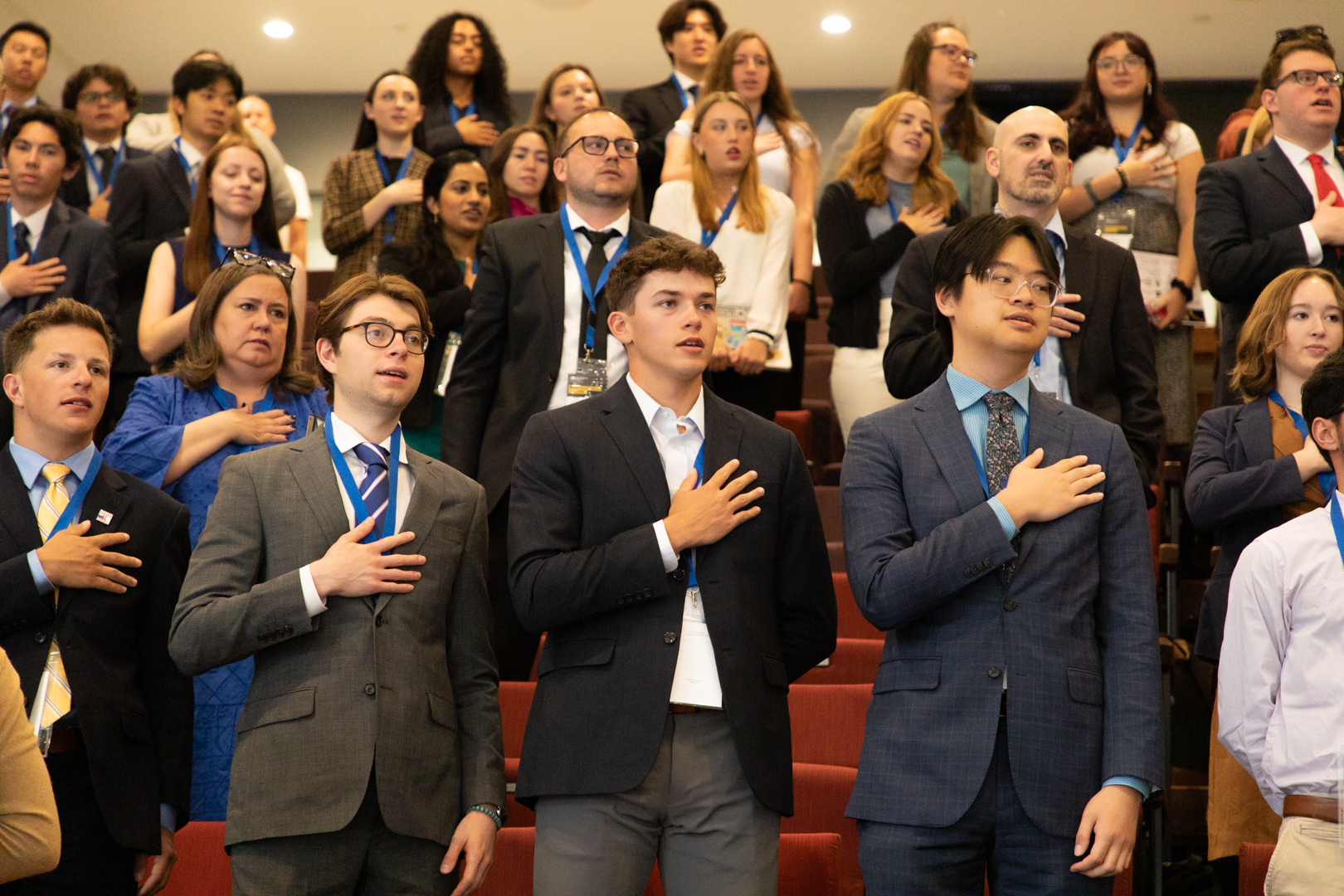
In a letter written to James Madison from Paris, Thomas Jefferson opined that “no society can make a perpetual constitution, or even a perpetual law. . . . Every constitution, then, and every law, naturally expires at the end of 19 years.” Jefferson took this perspective because he believed that “[t]he earth belongs to the living generation” and therefore constitutions must be adapted to each generation’s evolving standards of liberty and good government.
Of course, the Framers did not adopt Jefferson’s constitutional sunsetting approach, but they did allow for amendments that could enable new generations of citizens to imprint their new ideas and perspectives onto the Constitution over time. Nevertheless, the amendment process appears to have atrophied, with no new amendment adopted since 1992.
To test the proposition that committed citizens have the potential power to shape and adapt the Constitution to changing social, political and economic conditions, on May 23-26, 2024, the Center for Constitutional Design at the Sandra Day O’Connor College of Law at Arizona State University hosted the first student-led nationwide Model Constitutional Convention (the “MCC”). Patterned after other successful simulations like the Model United Nations, the MCC brought together more than 100 law and undergraduate student delegates from more than 70 universities to debate and adopt amendments to the United States Constitution. Due to the engagement and preparation of the student delegates, the outstanding keynote addresses by distinguished speakers, and the support of faculty mentors from across the country, I’m pleased to report that the MCC was an enormous success. Ultimately, following lively debate channeled by Roberts Rules of Order, the delegates adopted four amendments to the Constitution. Notwithstanding the students’ varied backgrounds and perspectives, the delegates demonstrated that compromise is possible even in our polarized times.
The simulation approximated reality in a number of ways. First, all students were assigned to a state (two delegates each) or to a U.S. territory and were provided with demographic and political data on their assigned jurisdictions. Second, the Convention strictly adhered to Roberts Rules of Order, and the delegates were supported by a professional Parliamentarian (Al Gage) who educated the students about the rules and advised leadership on specific questions throughout the Convention. Third, the students vetted their proposed amendments through 10 committees, each of which were authorized to bring two proposals to the floor of the Convention. Fourth, no amendment could be adopted unless it received a ¾ vote in the plenary session, thus mirroring the requirements of Article V. And finally, like the 1787 Convention, the MCC delegates elected their own President, Vice President and Secretary.
Throughout the weekend, the delegates also received advice, information and encouragement from four distinguished scholars: Erwin Chemerinsky, Jeffrey Rosen, Jill Lepore and Richard Albert. Each addressed particular elements associated with constitutional reform: Dean Chemerinsky highlighted some existing flaws in the current constitutional design; Jeffrey Rosen inspired the students with descriptions of the Framers’ objectives at the 1787 Convention and the National Constitution Center’s Constitution Drafting Project; Jill Lepore challenged the students with questions and analysis of the history of proposed amendments since 1789; and Richard Albert gave a rousing speech comparing the U.S. Constitution to other national constitutions and explaining why the opportunity for constitutional reform is so critical to a healthy democracy.
On the final day of deliberations and after lively and informed debate, cheers went up when the delegates passed their first amendment—an Equal Rights Amendment protecting citizens from discrimination on the basis of gender or sexual orientation. Three additional amendments were passed protecting tribal sovereignty, limiting eminent domain and eliminating partisan gerrymandering. A celebratory banquet highlighted individual students’ achievements with awards for persuasive oration, leadership and compromise skills. The most effective committee also received a group award.
Students’ reflections on the Convention highlight the impact it had on their understanding and enthusiasm for constitutional design, political engagement and collective action. For example, one student noted that, “As a student interested in constitutional reform and the state of our country in general, this Model Constitutional Convention was an invaluable experience. Besides putting me in contact with constitutional luminaries, enlightening mentors and bright peers, the convention was a wonderful opportunity to imagine and discuss what our ideal constitution would look like.” Another observed: “The Model Constitutional Convention was an eye opening experience to both the challenges and potential progress an Article V convention could bring to the United States. I am honored to have been selected to participate in the inaugural Model Constitutional Convention and I hope it will serve as an inspiration not just for future conventions like it, but also for real constitutional change.” Other testimonials demonstrated that the MCC was an enlightening experience for students, and one in which lasting friendships have been made. In addition to this direct impact on students, faculty mentors gained new insights through this hands-on learning experience, which they are now bringing back to their home institutions.
The organizers of the Convention are now considering how to perpetuate this simulation in future years. This first MCC was made possible by a generous donor (John Storr), enabling all students and mentors to attend all expenses paid. Further institutionalization of the MCC project will require a significant level of philanthropic support. The first MCC has demonstrated, however, that future student-led conventions will produce a high return on investment—especially as enthusiastic, diverse and engaged students show us how to make compromise happen. As we from older generations watched in amazement, these law and undergraduate students demonstrated the highest commitment to civil and civic engagement. While the students certainly benefited from the Convention, the nation may stand to benefit even more if their example can be replicated. Kudos to our dedicated students/delegates/reformers. To them we must gratefully say, Well done.
Professor Stefanie Lindquist is the executive director for the Center for Constitutional Design at Sandra Day O’Connor College of Law at Arizona State University, which hosted the MCC.
Rick LaRue
Independent Analyst
